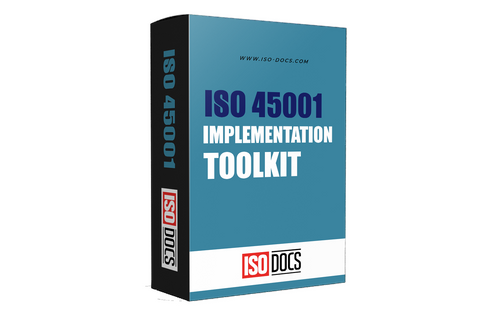ISO 45001 Certification Checklist Templates
Introduction
ISO 45001 certification is a vital step for organizations aiming to improve workplace safety and health. These international standards provide a framework for managing occupational health and safety (OH&S) risks, ensuring a safer working environment for employees. Understanding the ISO 45001 certification process is essential for organizations looking to implement effective safety measures.

What Is ISO 45001 And Why Is It Important?
Iso 45001 is an international standard that outlines the requirements for an occupational health and safety management system (OHSMS). It aims to provide a safe workplace and reduce injuries and illnesses and sometimes death of employees due to hazards. The importance of ISO 45001 is its ability to help organizations create a culture of safety. Comply with legal requirements and improve overall employee well-being.
Overview Of The ISO 45001 Certification Process
The ISO 45001 Certification process involves several key steps :
- First, the organization must conduct a gap analysis to identify the areas that needs improvement
- Next, they should develop and implement OHSMS that meets the standard requirements.
- After that, the internal audit is conducted to assess the complaint level
- Finally, an audit certification body comes in and performs the audit to verify that we are adhering to ISO 45001.
Therefore, the successful completion of this process results in certification that demonstrates a commitment to workplace safety in our organization.
Benefits Of ISO 45001 Certification
Achieving as of 45001 certification offers a numerous benefits and advantages to the organization where organization can expect improved employee morale and productivity as a safer workplace and a positive environment additionally certification can enhance the security and reputation through the organization making it more attractive and safety to clients and partners as well furthermore compliance with ISO 45001 can lead to reduced stress life of the employees and reduced premium cost associated with the workplace incidents or hazards.
The Comprehensive ISO 45001 Checklist: Stages and Requirements
Achieving ISO 45001 certification is a significant success for organizations aiming to improve their occupational health and safety management systems the checklist below outlines the essential stages and requirements to guide you through the entire certification process.
Stage 1: Gap Analysis and Planning
The first step in conducting gap analysis is to identify areas where we are lagging in current practices of ISO 45001 standards. This detailed gap analysis helps us in understanding our existing process and determining the changes required to get the standards in place. By following this approach, a detailed plan should be developed, outlining the steps needed to bridge the gaps, allocating resources, and establishing timelines for implementation.
Stage 2: Implementation and Documentation
Once the planning part is done, the next stage is implementation. This results in necessary changes to practices and ensures that all employees are well-trained on the new procedures. Documenting the procedures in this stage is very crucial, as it provides evidence of compliance and serves as a reference for ongoing operations. Proper records of training, risk assessment, and safety procedures should be maintained.
Stage 3: Internal Audit and Management Review
After the implementation part, conducting an internal audit is an essential part to evaluate the effectiveness of the newly implemented systems. This audit helps in identifying any non-conformities and areas for improvement. Following the audit, a management review should be held to discuss findings, assess the overall performance of the health and safety management system, and make informed decisions in future actions.

Stage 4: Certification Audit
The final stage is the certification audit, which is conducted by an external auditor. This auditor will assess the organization's compliance with ISO 45001 standards. It is crucial to prepare for an audit by ensuring that all the documentation is in order and the employees are trained on their respective work procedures, and understand the systems. Successful completion of this audit leads to ISO 45001 certification, signifying a commitment to maintaining high standards of occupational health and safety.
Maintaining ISO 45001 Certification: Ongoing Compliance
Achieving ISO 45001 certification is a significant milestone for any organization, but the journey doesn't end here. It’s a continuous process of ongoing compliance to ensure the occupational health and safety management system OHSMS remains effective and aligned with the latest standards. The following are the key strategies to maintain your ISO 45001 certification.
Regular Internal Audits and Management Reviews
Conducting regular internal audits is an important part of identifying areas of improvement within your OHSSMS. These audits are an essential process to be followed to ensure that they meet the requirements of ISO 45001. Additionally, the management should conduct reviews periodically to find out the overall performance of OHSMS, discuss the audit findings, and make informed decisions for further actions.
Continuous Improvement Of The OHSMS
Implementing ISO 45001 emphasises continuous improvements. Organizations should actively seek information from the employees and stakeholders to identify the actual potential hazards and look for areas for enhancement. And implement the Corrective actions considering the feedback. This type not only helps in building ISO 45001 but also boosts the work environment and safety culture within the organization.
Conclusion: Streamlining Your ISO 45001 Journey
As you dive deeper into the ISO 45001 certification journey, it's essential to have a clear understanding of the steps and considerations involved. This process not only helps in ensuring workplace safety but also demonstrates how our organization is committed to occupational health and safety standards. To further assist you in your ISO 45001 journey, consider browsing the websites dedicated to ISO standards and often search for the latest updates for the ISO 45001. Additionally, joining forums or professional groups can connect you with others who have navigated the certification journey successfully.


